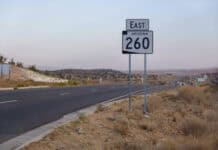At the Sedona City Council meeting on Oct. 25, Councilman John Currivan was the lone vote in opposition to provide reasonable housing options for Sedona residents.
Currivan stood in opposition to every speaker from the public, 13 in all, and six fellow council members in voting against the community’s prevailing and perennial interest in providing more, and more diverse, housing options.
Currivan cited apartments he found in the New York City area in the 240-square-foot range and even down to 100-square, though he is uncertain how “anyone” could possibly live in such a small space. If the 12-unit per density restriction is removed, Currivan alleges, such New York units may come to Sedona.
Shocking! Yet such “tiny” units are already here. I lived in a spartan 100-square-foot unit for three months when I moved to Sedona. That was in 2004, not in some far-flung future without his magically protective density restrictions. That unit was the only one I could find at the time because affordable housing was as terrible then as it is now, and many residents rent them because that’s what is available.
It’s also silly for the councilman to assume that 298 of the 1,530 voters who approved the 155-page Sedona Community Plan in 2014 would have flipped their votes had the two sentences — of the 6,659 sentences in the document — limiting density to 12 units per acre been different.
Voters were not given the option of selecting preferred density. The vote was on the entire community plan, not a sentence-by-sentence line-item vote. Can you imagine the page count of a line-item community plan ballot?
Currivan’s main argument against increased density is a logical fallacy known as circular reasoning. He postulates that the city can only grow within its “limits,” then argues the limits are the number of homes that can be built based on density, and, in counting each house per acre, there is a rigidly fixed number of rooftops the city can hold, and any shingle higher than that is forbidden because … well, “limits.”
First, he ignores the fact that density can be changed by council to allow more housing options.
Second, at a max density of 12 units per acre, the cap of the city of Sedona’s 12,179 total acres — as Currivan’s “limit” stands now — is 146,150 homes, with each parcel occupying up to 3,630 square feet. We have about 141,000 more homes to build before reaching that limit.
Third, Currivan neglects to cite the following paragraph from the Community Plan that puts his “limits” claim in its context: “Since incorporation in 1988, the city has not pursued any annexations of adjoining land.” Thus “limits” isn’t about X number of rooftops, but about the city choosing not to grow by annexing forest land or adjoining territory for more homes.
Currivan then suggested instead that the city conduct a survey or public vote to gauge how many max units per acre the city should permit.
Surveys are great tools when targeted at specific problems, but should not be used willy-nilly for every item that comes to the fore. The “let’s conduct a survey” argument has been a failed tactic of countless Sedona City Council members fruitlessly defending positions opposed by the majority of the public and the majority of council. Why a councilman would want to waste taxpayer dollars to conduct a survey when a public meeting is way cheaper eludes all logic.
Councilman, every speaker at the meeting supported raising the density, six of your fellow council members did the same and no one spoke in opposition to it. A survey would not dramatically change those numbers, let alone reverse them.
Additionally, part of the reason voters elect council members is that we trust them to decide these minor matters so we don’t have to deal with a costly survey or election every month. If Currivan instead wants a government run by survey, let’s abolish the council altogether and run the city as an American-Idolocracy.
The fact is, average voters could not tell you whether six units or 16 units per acre is the average for a apartment complex, let alone say how big an acre is. No need to Google — it’s 43,560 square feet, or 90.8 percent of a football field or 16 tennis courts. The national average density for two-story apartments is about 22 to 32 per acre.
Finally, any proposed project has to have building codes first approved by Sedona city staff, then the Sedona Planning & Zoning Commission and, if a zone change is required, by the Sedona City Council.
Each of these are significant hurdles, so Currivan need not fret. There are safeguards to prevent New York-sized apartments from coming to Sedona, or, at least any more than those already here.
Christopher Fox Graham
Managing Editor


















